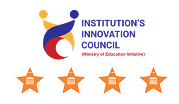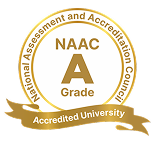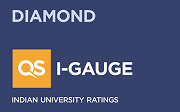

Author Guideline
International Journal of Agriculture, Allied Sciences and Technology (IJAAST) is published ONLINE.
Papers submitted will be subjected into DOUBLE BLIND PEER REVIEWES. On the basis of referee's comments, author(s) will be asked by the editor to revise the paper / answer the queries. Original Research Articles are accepted on the understanding that the work described is original and has not been published elsewhere and that the authors have obtained necessary authorization for publication of the material submitted.
Manuscript: It should be in clear concise English, typewritten in double space on one side of A4 size white paper with at least 2.5 cm margin. Full research paper should not exceed 15 typed pages including tables and figures and should contain abstract, introduction, materials and methods, results and discussion, acknowledgment and reference. Short notes, not exceeding 6 typed pages, may also be divided into different sections with a short abstract. MSWord file is preferred. Submitted papers will be acknowledged. IJAAST reserves the right to accept/reject and modify the articles into research article/ research note. ALL ARTICLES SHOULD BE SUBMITTED THROUGH ONLINE ONLY.
Authorship of the Paper:
Authorship should be limited to those who have made a significant contribution to the conception, design, execution, or interpretation of the reported study. All those who have made significant contributions should be listed as co-authors. Where there are others who have participated in certain substantive aspects of the research project, they should be acknowledged or listed as contributors. The corresponding author should ensure that all appropriate co-authors and no inappropriate co-authors are included on the paper, and that all co-authors have seen and approved the final version of the paper and have agreed to its submission for publication.
Corresponding author:
The corresponding author is fully responsible for any disputes arising due to the publication of his/her manuscript.
Title page: The title should be crisp and clearly indicates the contents of the article. This should be followed by name(s) of the author(s), affiliation, and mailing address including e-mail of the corresponding author.
Abstract: A brief informative abstract should follow on the second page of the manuscript. It should clearly bring out the scope of the work and its salient features. It should be single paragraph of not more than 250 words.
Key words: The abstract should be followed by the important words (note more than six keywords) of the article, which can be included in various indexes.
Introduction: It should be brief, crisp and introduce the work in clear terms. Key references related to the work must be cited.
Materials and Methods: Standard and already reported method must be clearly given or cited. Any modification of the original method must be duly highlighted. This section may be subtitled for clarity. Use standard abbreviations of the various units. ISI units should be used for measurements.
Results and Discussion: This section can also be subtitled for clarity. Results and discussion should be combined. Salient results must be highlighted and discussed with related works. A brief conclusion of the research finding and future line of work may be given at the end.
Figures and Structures: Structure drawings, graphs and diagrams should be given in JPEG format separately and also placed in the text preferably through MS Word. Figures/structures must be numbered with figure numbers like Fig.1, Fig 2., and their approximate position in the text indicated. It is author's responsibility to provide suitable figures and drawings.
Tables: Tables should be typed on separate sheets and numbered consecutively within the text in Arabic numbers. They should bear a descriptive short heading in lower case, which starts with the word "Table". Their place in the text should be indicated.
Reference: Relevant references shall be quoted under each section and must be cited in full in the reference section. References to unpublished work and abstract citation may be avoided. The following style should be followed:
Examples
Singh, B., Das, A., Parihar, A. K., Bhagawati, B., Singh, D., Pathak, K. N., Dwivedi, K., Das, N., Keshari, N., Midha, R. L. and Kumar, R. 2020.Delineation of Genotype-by-Environment interactions for identification and validation of resistant genotypes in mungbean to root-knot nematode (Meloidogyne incognita) using GGE biplot. Scientific reports, 10 (1):1-4.
Rao, C.R. (1952). Advanced Statistical Methods in Biometrical Research, John Wiley and Sons, New York.
Sahoo, L., Sugla, T. and Jaiwal, P.K. 2002. In vitro regeneration and genetic transformation of Vigna species. In: Jaiwal, P.K. and Singh, R.P. (Eds.), Biotechnology for the improvement of legumes. Springer Publication, Kluwer, The Netherlands. Pp 1-40.
Maan, C. S. 2014. Genetic analysis for forage and quality traits in cowpea (Vigna unguiculata (L.) Walp). M.Sc. Thesis, Punjab Agricultural University, Ludhiana.
Food and Agricultural Organisation. QCL Crops and livestock products 2020. Available from: https://www.fao.org/faostat/en/#data/QCL
Anonymous, (2017). Pulses in India: Retrospect and prospect. Directorate of Pulses Development, Bhopal, Madhya Pradesh
Annual report 2019. ICAR – Indian Institute of Pulses Research. Kanpur
Mittal, R.K., Katna, G. and Sood, B.C. 2005. Inter-specific hybridization in the genus Vigna. In: Proceedings of Fourth International Food Legumes Research, Oct. 2-4, 2005, Indian Agricultural Research Institute, New Delhi.
Statement about Open Access:
This is an open access journal which means that all content is freely available without charge to the user or his/her institution. Users are allowed to read, download, copy, distribute, print, search, or link to the full texts of the articles in this journal without asking prior permission from the publisher or the author. This is in accordance with the BOAI definition of open access.
Statement about Copyright:
Submission of a manuscript implies the following
- the work described has not been published before (except in the form of an abstract or as part of thesis)
- this manuscript is not under consideration for publication elsewhere;
- when the manuscript is accepted for publication, the authors agree to automatic transfer of the copyright to the Electronic Journal of Plant Breeding and Indian Society of Plant Breeders.
Errors in published works: When an author discovers a significant error or inaccuracy in his/her own published work, it is the author's obligation to promptly notify the journal editor or publisher and cooperate with the editor to retract or correct the paper.
Concurrent Publication: An author should not in general publish manuscripts describing essentially the same research in more than one journal or primary publication. Submitting the same manuscript to more than one journal concurrently constitutes unethical publishing behaviour and is unacceptable.
Plagiarism Policy: Editorial board of International Journal of Agriculture, Allied Sciences and Technology (IJAAST) considers very seriously about plagiarism in manuscripts received. Indicate software for plagiarism check which should not exceed 20%. If the plagiarism exceeds 20% the article will be summarily Rejected.
Acknowledgement of Sources: Proper acknowledgment of the work of others must always be given.
Submission fee: IJAAST is an open access and free journal
Manuscripts and communication: Manuscripts and all communications should be submitted through email only.
Review Policy: All the manuscripts will be DOUBLE PEER REVIEWED. On the basis of two reviewer’s comments, author(s) will be asked by the editor to revise the paper / answer the queries. Based on the reply the article will be accepted. If need arises, then the revised article will be sent to the concerned reviewer for further approval.






